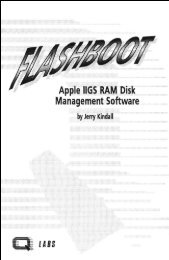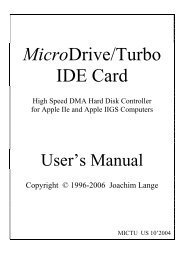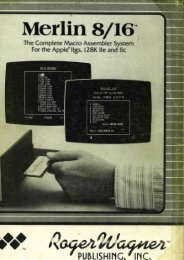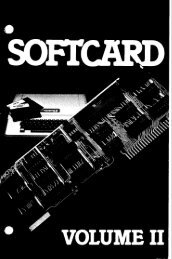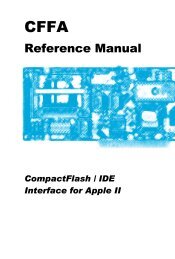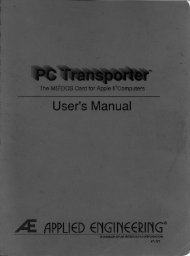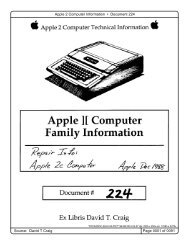w65c816s Microprocessor Data Sheet.pdf
w65c816s Microprocessor Data Sheet.pdf
w65c816s Microprocessor Data Sheet.pdf
You also want an ePaper? Increase the reach of your titles
YUMPU automatically turns print PDFs into web optimized ePapers that Google loves.
The Western Design Center, Inc.2 W65C816S FUNCTIONAL DESCRIPTIONW65C816S <strong>Data</strong> <strong>Sheet</strong>The W65C816S provides the design engineer with upward software compatibility from 8-bit W65C02 inapplications to 16-bit system application. In Emulation mode, the W65C816S offers many advantages, includingfull software compatibility with 6502 coding.Internal organization of the W65C816S can be divided into two parts: 1) The Register Section and 2) The ControlSection. Instructions obtained from program memory are executed by implementing a series of data transferswithin the Register Section. Signals that cause data transfers to be executed are generated within the ControlSection. The W65C816S has a 16-bit internal bus architecture with an 8-bit external data bus and 24-bit externaladdress bus.2.1 Instruction Register (IR)An Operation Code enters the processor on the <strong>Data</strong> Bus, and is latched into the Instruction Register during theOpCode fetch cycle. This OpCode is then decoded, along with timing and interrupt signals, to generate variousInstruction Register control signals for use during instruction operations.2.2 Timing Control Unit (TCU)The Timing Control Unit keeps track of each instruction cycle as it is executed. The TCU is set to zero each timean instruction fetch is executed, and is advanced at the beginning of each cycle for as many cycles as is required tocomplete the instruction. Each data transfer between registers depends upon decoding the contents of both theInstruction Register and the Timing Control Unit.2.3 Arithmetic and Logic Unit (ALU)All arithmetic and logic operations take place within the 16-bit ALU. In addition to data operations, the ALU alsocalculates the effective address for relative and indexed addressing modes. The result of a data operation is storedin either memory or an internal register. Carry, Negative, Overflow and Zero flags may be updated following theALU data operation.2.4 Internal Registers (Refer to Programming Model Table 2-2)2.5 Accumulator (A)The Accumulator (A) is a general purpose register which contains one of the operands and the result of mostarithmetic and logical operations. In the Native mode (E=0), when the Accumulator Select Bit (M) equals zero,the Accumulator is established as 16 bits wide (A, B=C). When the Accumulator Select Bit (M) equals one, theAccumulator is 8 bits wide (A). In this case, the upper 8 bits (B) may be used for temporary storage inconjunction with the Exchange Accumulator (XBA) instruction.The Western Design Center W65C816S 8




